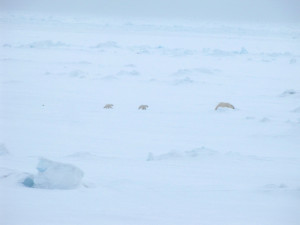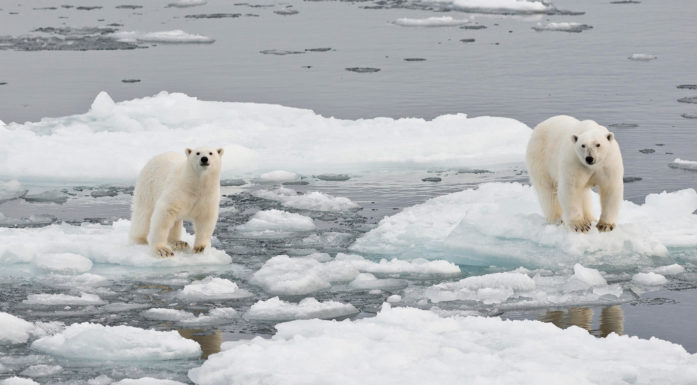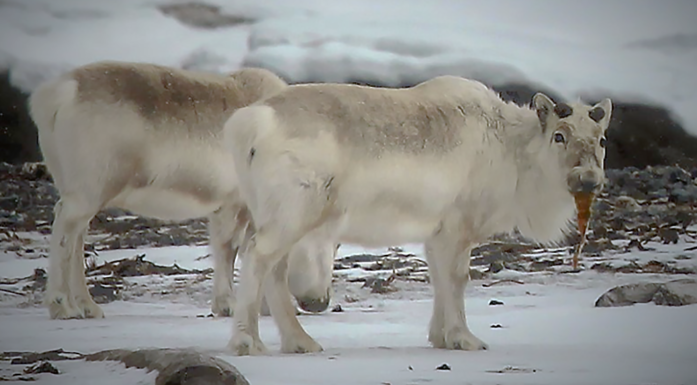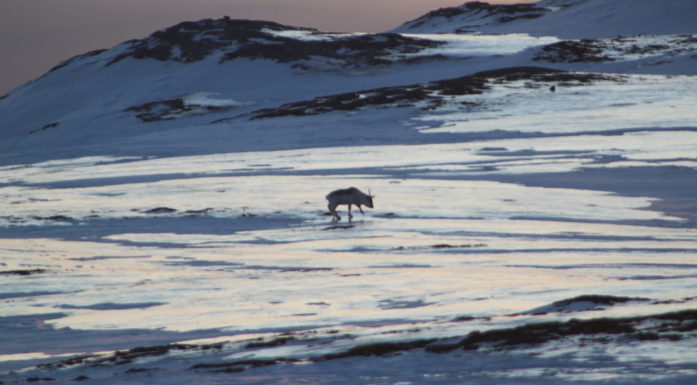Drilling down to understand sea ice
Global warming is upending virtually everything that scientists know about the Arctic ice cap. During the first half of 2015, a multinational team of researchers froze the RV Lance into the Arctic ice to learn more about how this ice has changed. NTNU researchers were among the scientists seeking to learn more about this changing environment.
They called her “the ridge girl”.
That’s because Åse Ervik, a PhD candidate in NTNU’s Sustainable Arctic Marine and Coastal Technology programme (SAMCoT), spent three weeks this spring aboard the RV Lance, drilling holes into the big ridges that form between the pack ice in frozen Arctic seas.
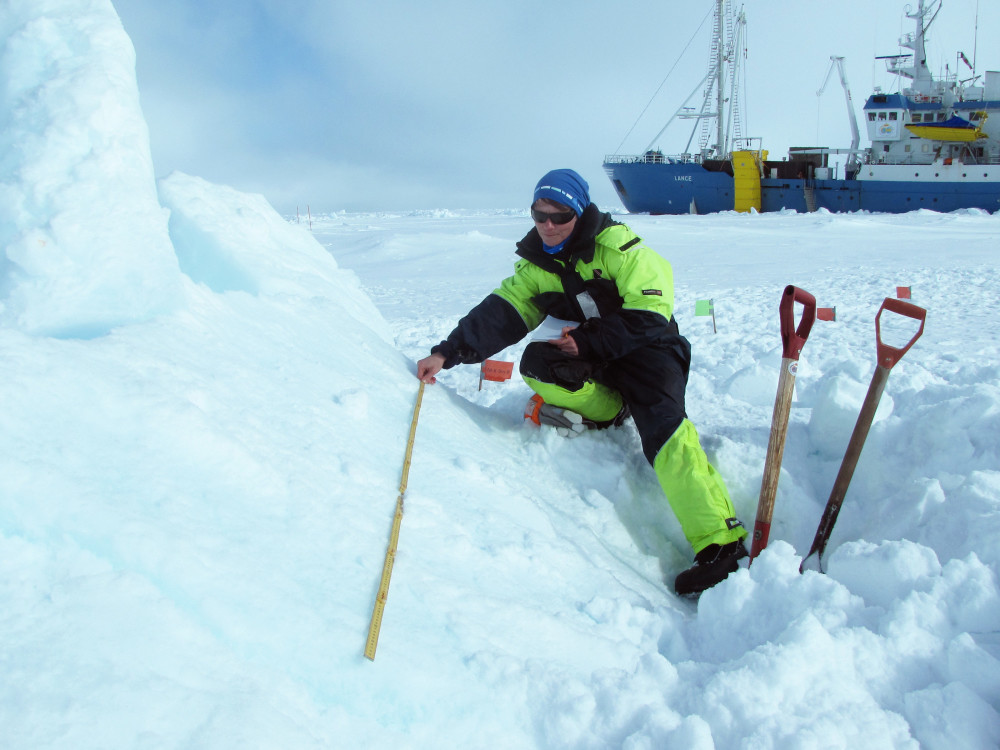
Ice ridges cause problems for ships and fixed structures in the Arctic, such as oil platforms and lighthouses. But relatively little is known about their physical characteristics — which is why Åse Ervik and her colleagues spent 3 weeks on the RV Lance to study ice ridges. Photo: Åse Ervik
These ridges – which can be several metres high and several times as deep – can cause problems for ships and fixed structures in the Arctic, such as lighthouses, bridges, oil platforms and quays. Researchers like Ervik need to know more about the physical properties of ice ridges so that they can further refine computer models used to design manmade structures for the ice. And the only way to get accurate information is to spend hours at a time taking painstaking measurements of how thick the ice is and how it is structured.
“You can read paper after paper about big ice ridges, but until you go out there and actually drill holes into a 15-metre-long ridge, you really don’t know what it’s like,” Ervik said. “You may think the ice there is flat, but that is so wrong. There’s ridge after ridge after ridge after ridge.”
- You might also like: Working safely to protect a cold, remote place
A six-month cruise
Ervik was one of a select group of scientists who spent time on the RV Lance during the N-ICE 2015 cruise, funded by the Norwegian Polar Institute, the Fram Centre, and the Norwegian Ministry of Climate and Environment.
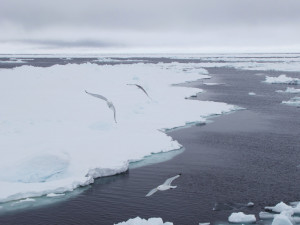
As the spring progressed, the Arctic ice cap broke up, and the RV Lance had to be moved to be attached to a new ice floe. Photo: Åse Ervik
The Lance was frozen into the Arctic ice for six months so that scientists could study ice conditions from winter’s deep freeze to spring breakup – a cradle-to-grave approach. Researchers spent as long as 6 weeks on the ship, studying everything from the tiny plankton and alga in the Arctic Ocean to turbulent mixing in the waters under the winter ice.
“Overall the field campaign has been a great feat, and all the participants and support personnel have to be given all the credit for the success,” said Harald Steen, N-ICE project leader and head of the Norwegian Polar Institute’s centre for Ice, Climate and Ecosystems (ICE).“We have spent in total 111 days attached to an ice floe since January 15, where 68 scientists, 27 support staff, and 20 ship crew have been involved.”
The N-ICE project has also generated an enormous amount of international media attention, including a four-part blog series on the National Geographic website.
- You might also like: Celebrity ice
Thinner and younger
The Arctic ice pack used to be composed mainly of ice that was formed and survived over many years. But now, more and more of the arctic ice pack is melting away. The US National Snow and Ice Data Center reports that the smallest-ever summer Arctic ice cap was measured in 2012, while earlier this year, the center reported that the maximum extent of the Arctic sea ice for 2015 was the lowest ever in the existing satellite record.
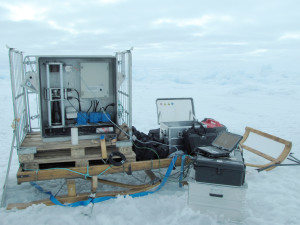
Åse Ervik’s three weeks on the RV Lance required four pallets of equipment, including this compression tester, which is used to test the strength of different ice cores. Photo: Åse Ervik
These changes are altering the very nature of winter ice in the Arctic: Now, instead of thick, multi-year ice, the winter ice cap is mainly composed of thinner, one-year-old ice. This ice is not only thinner, it reflects sunlight differently and it melts more easily than thicker, multi-year ice.
That matters because climate models used to predict how global warming will affect different parts of the planet rely on older data from the Arctic, when there was much more multi-year ice. It also matters because engineers who design for Arctic conditions need to know exactly what kinds of conditions they are designing for.
“There is a lot of focus on the Arctic,” Ervik says. “If we are going to do anything there, it has to be safe, and we need to certain about how we design for those conditions.”
- You might also like: Secrets of the High North
Drilling holes
Ervik’s PhD thesis involves refining a computer model for ice ridges, which can be used to predict how much stress an ice ridge might put on a fixed structure.
Her three weeks on the ice required four pallets of equipment, loaded with ice drills and corers, two four-stroke engines, a temperature and salinity kit, a compression machine to measure the strength of different parts of the ice ridge, a sonar machine designed to create 3-D images of the ice, two toolboxes to fix broken equipment, and a thermistor buoy equipped with an 11-metre-long string of temperature sensors called thermistors that were placed to drift along with one of the two ridges she studied.
SAMCoT
NTNU's Sustainable Arctic Marine and Coastal Technology centre (SAMCoT) is a centre for research-based innovation that has been funded by the Research Council of Norway from 2011 to 2019. The centre's researchers study fixed and floating structures in ice, material (ice) modelling, ice management and coastal technology in the Arctic. They also collect and analyze field data on sea ice, icebergs, and coastal permafrost, and working with these data on models that are key to further research.
Centres like SAMCoT are designed to work cooperatively with industry partners to “enhance the capability of the business sector to innovate by focusing on long-term research,” according to the Research Council. Among SAMCoT's main industrial partners are Statoil, DNV-GL, Total, GDF Suez and Shell. You can read more about SAMCoT and its different research programmes at www.ntnu.edu/samcot.
Each day, she would spend between 12 to 15 hours out on the two ice ridges that she selected for study, drilling holes and measuring something called porosity, or the gaps between big blocks of ice at the bottom of an ice ridge. She also tested the sonar equipment to see how it would work to provide 3-D images of the ice ridge, and participated in the testing of a geomagnetic measurement device (GEM) that hopefully can produce 3-D images of the porosity of the ice ridges in the future.
An ice ridge may sound like a simple structure, but it is anything but. The top layer is called the consolidated layer, which is frozen fairly solid. Underneath is the rubble, which is what exactly it sounds like: different-sized ice chunks frozen together in a crazy mix. There can be holes between the chunks – which are measured as porosity. Ervik worked with a Finnish PhD student, Annu Oikkonen; both researchers were always watched over by a polar bear guard.
- You might also like: The dirtiest clean place on Earth
Polar bears and cakes
Working in the Arctic has its share of challenges. At one point, a polar bear ate the stick that Ervik used to support the thermistor buoy suspended in the ice ridge.
There are also benefits, too: there was usually a mid-afternoon coffee break on the RV Lance – one that Ervik and her colleague always missed, because they were out on their ice ridge, collecting data. On more than one occasion, however, the ship’s crew drove out to where Ervik was working to deliver mid-afternoon coffee and cake.
“You get pretty spoiled with the food,” she said.
Most of all, Ervik says, she is grateful she had the chance to be working out on the ice, collecting data that is otherwise impossible to get.
“If you are in the Arctic and you want to experience it, you should be out on the ice,” she said. “You don’t get to do something like that every day.”
